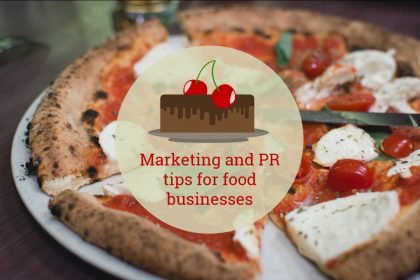Four simple steps to defining and reaching your target market
Before you can launch a successful marketing campaign, there’s one piece of vital information you need to know – your target market.
If you don’t understand who wants or needs your products or services, how will you know where to find these people, and what to say to appeal to them?
Whether you’re building a sprawling affiliate marketing business promoting top affiliate programs (you can read more in this click bank affiliate marketing guide) or growing your e-commerce empire – reaching your target market is no easy feat.
Paula Hutchings from Marketing Vision shares four simple steps to identifying and reaching your perfect target market.
Four simple steps to defining and reaching your target market
One of the biggest challenges that small business owners face is ensuring that they are talking to their target market. With limited marketing funds, it is essential that you talk to the right people – your potential customers.
It may sound obvious, but there are many business owners who give little consideration to who will buy their products or services before they begin their marketing. But how can you successfully market and grow a business without this information? Follow these simple steps to help you identity and reach your real target market.
Step 1: Define your target market
The first step you need to take is to define your target market. Having a clear profile of your target customers will help you weed out the ‘maybes’ and ‘nevers’, and ensure that your marketing activities are targeted and cost-effective.
Take some time to note down the following about your target audience:
- Demographics – who are they? What is their age, gender, profession and income etc.
- Psychographics – How do they think? What are their interests, values, attitudes, likes and dislikes etc?
- Behavioural – What do they do? How do they consume media? Is it online or offline? What sites or publications?
It’s worth taking an extra step and thinking about what your bullseye target market looks like. To do this, write a short statement which describes your perfect customer.
Step 2: Reach your target market
You now need to give consideration to how you are going to reach your target audience. Having spent time on profiling your target market, you should find this step of the process much easier. To maximise your marketing investment, you need to fish where the fish are!
Some simple examples – if your target audience are 25-35 year-old busy professionals, think about social media and online platforms, as these are mediums that this demographic actively engage with. Alternatively, if your products or services are aimed at 55-65 year-olds who are largely retired, you may want to opt for print publications that you know this demographic like to read.
Whether you decide on online or offline advertising, remember to ask advertising managers for a breakdown of the demographic profile of their readers. This information will help you to make decisions about allocating your marketing funds effectively.
Note also that no matter who your target audience are, you need to ensure that your content not only reaches them, but also engages with them (‘how to write engaging content’ is a topic for another day!).
Step 3: Identify what type of customers they are
With each marketing outreach you undertake, remember to also think about the type of customers you are trying to connect with. Are they existing, new, lapsed or repertoire customers (repertoire customers are those who are not loyal to one brand, but who may be influenced by things like promotional offers)? This will impact on the messaging and tone that you adopt for your communications.
Step 4: Tailor your marketing to your customers
When you really understand who you’re talking to, you can ensure that all your communications are on-message and sent using the right channels and media. Using the intelligence you have gained in the right way ensures that your marketing budget has the most impact, and is much more likely to lead to high value sales, and loyal, repeat customers.
Know your target market and your business will grow
A new client of mine recently came to me for advice on how to identify their target market. As a relatively new start-up business they were keen to nail this upfront in order to help them quickly build a sustainable business.
We went through the four steps outlined above and worked together to build a profile of their target audience. With some additional consultancy work, they now have the confidence to explore or reject potential advertising opportunities that come their way, and are seeing their business grow as a result:
“By learning how to effectively pinpoint our target customer, we no longer need to just wait and hope customers will come to us, or search them out in all the wrong places. Instead we now know where and how to attract their interest.
We’ve saved a small fortune by advertising in the right places, which are often free, rather than placing expensive ads in publications which are too general to reach our potential customers directly.
Our business is now starting to grow past the start-up stage, and we know that as it grows we will often return for invaluable advice that will keep us looking for new ways to improve and reach an even larger market”.
Start identifying your own target market
With limited time and money, small business owners can’t afford to take a shot in the dark approach to marketing. Dedicating time to clarifying your target market will help you be more focused, more effective in your marketing activities and ultimately achieve a much better return on your investment.
If you would like to speak to Paula Hutchings about how you can save money on advertising by identifying your business’ target market, you can contact her through her website.










